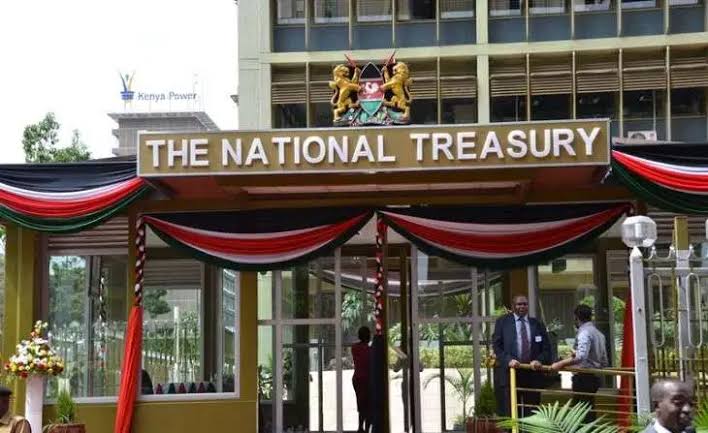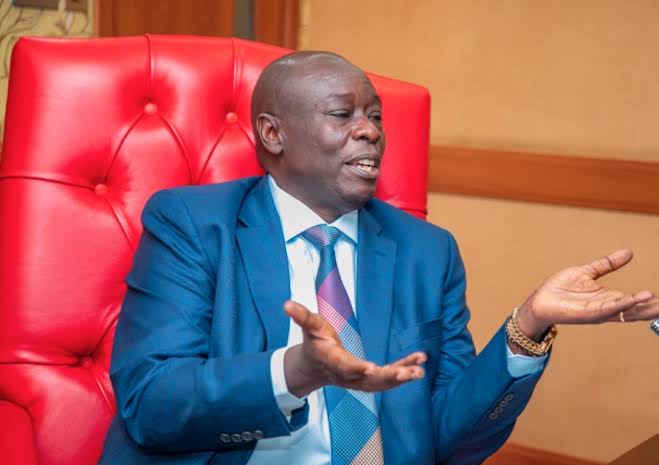
Faith Nyasuguta
Data from the Kenyan treasury indicates that the government’s financial position was better in March than in February despite the larger debt payments, contradicting public statements by officials portraying the government as broke.
Recently, President William Ruto, his Deputy Rigathi Gachagua and a host of top administration officials blamed delays in paying civil servants’ salaries in March on an acute cash crunch and loan repayments that they said required the government to pay creditors about Sh150 billion ($1.109 billion) — about double the amount that’s usually paid.
According to treasury data published in the latest Kenya Gazette notice, Kenya’s debt repayment bill grew to Sh121.3 billion ($896.5 million) in March from Sh66.7 billion ($492.9 million) in February, reflecting an extra Sh54.6 billion ($403.5 million).

However, revenues for March grew from Sh84.2 billion ($622.3 million) to Sh260.9 billion ($1.93 billion), which was more than enough to cover for the additional debt repayment expenses.
While admitting the cash crunch, top Treasury officials have sought to play down claims by the Presidency and politicians that Kenya was broke.
According to the officials, Kenya is able to meet its core obligations, including debt repayment and civil service salaries on time.
Media enquiries revealed that the majority of civil servants had received their salaries at the time politicians raised the alarm that the government had failed to pay March salaries for workers in the national government.
“The government is not broke because the government has so far been able to pay debt obligations when they fall due. In other words, we have not defaulted on debt obligations,” a top official at the Treasury who sought anonymity said.
A number of leaders went on to declare the government was “broke”, blaming the previous administration of Uhuru Kenyatta for excessive borrowing whose repayments were quickly falling due.

An analysis of monthly expenditure from the state’s main account, the exchequer, has revealed it was not the first time it was facing debt obligations of such magnitude relative to revenues.
The data, gazetted by Treasury Cabinet Secretary Njuguna Ndung’u, show elevated debt obligations in March, largely driven by interest payments to domestic creditors, were lower than in January.
The Treasury data show the Sh121.32 billion ($896 million) debt costs for March were slightly lower than the Sh123.53 billion ($913 million) paid in January when biannual loan repayment obligations to China fell due.
The obligations in March were equivalent to 77.19 percent of Sh157.17 billion ($1.16 billion) taxes in March, which is a lower share compared with January (81.20 percent) and November (78.40 percent).
The Ruto administration, which rode to power on a pledge to lift the economic welfare of those at the bottom of the pyramid, has tended to blame the previous administration for economic hardships, including the elevated cost of living.
In explaining the March salary delays and protracted failure to disburse funds to the counties on time, Mr Gachagua, for instance, said the current administration was rebuilding the economy “from scratch” after inheriting “empty” coffers from the previous one “which borrowed money left, right and centre”.

He echoed comments from President Ruto.
“I know we have an issue of delayed salaries [which] …is the first time this has happened, but also it is the first time we are having such monumental debts,” Dr Ruto said on April 11, explaining the delays in salaries for a section of employees and release of shareable revenue to the counties.
Kenya’s public wage bill was projected to reach Sh131.9 billion ($975 million) in the three months through December, putting the monthly bill at Sh43.9 billion ($324.5 million)
The data show total revenue in March grew at a faster pace of 15.48 percent year-on-year to Sh260.91 billion ($1.93 billion) against a 13.18 percent rise in expenditure to Sh259.63 billion ($1.92 billion)
“The challenge the government is facing is a temporary liquidity shortage due to a delay in receipt of funds expected earlier, but now are set to be disbursed in May and June 2023,” the Treasury official said.
“The government has also avoided borrowing from the international markets because the international money markets are not favourable at the moment.”
The data show the Treasury has struggled to raise money domestically, with nine-month borrowing (new borrowing and rollovers) through March falling short of the target by Sh268.57 billion ($1.98 billion) on a prorated basis.




